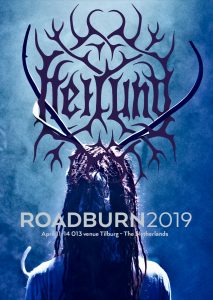 Too little time, too many good bands to see! That about sums up the two days I spent at this year’s Roadburn festival. The three shows I’ve chosen to review might not look like the obvious choices, but taken together they form an interesting and unexpected whole. You’ll see.
Too little time, too many good bands to see! That about sums up the two days I spent at this year’s Roadburn festival. The three shows I’ve chosen to review might not look like the obvious choices, but taken together they form an interesting and unexpected whole. You’ll see.
Having been given a lift from Zagreb to Tilburg by some very friendly fellow Croats, I arrived Thursday late in the afternoon. Although exhausted from the long drive, after checking into accommodation and having something to eat, I went straight to the venues.
I looked and listened in here and there, especially enjoying Emma Ruth Rundle’s show at the Koepelhal, but there was one band I had planned on seeing since they were announced: Heilung. To make sure I caught them from beginning to end, I went early to 013, Roadburn’s main venue. Apart from floor and balcony, the main venue has an arena-style back area, with broad steps going up towards the back wall – the ideal place to sit down, rest and wait for the show to begin.
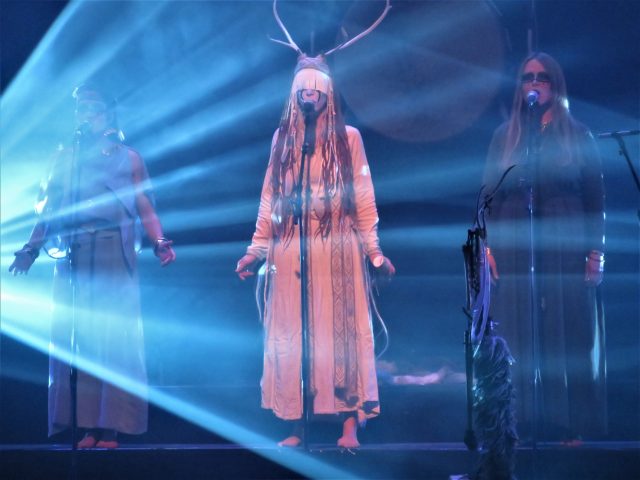
The stage was already decorated, something which must have taken quite some time to do. Tree limbs, feathers, horns, bones, animal skulls hung from ropes and were attached to percussion instruments and microphone stands. In the centre of the stage stood something resembling an altar, to the left of it a construction that reminded me of a throne. The floor of the venue was already pretty crowded. I sat down on the steps in the back and soaked in the atmosphere.
Heilung’s show began with an opening ceremony, or a ritual, its participants, clad in costumes made of cloth and leather, decorated with beads, teeth, horns and animal bones, standing in a circle, holding hands, reciting and repeating pieces of text. What followed after that really needs to be experienced, but I’ll do my best trying to describe it.
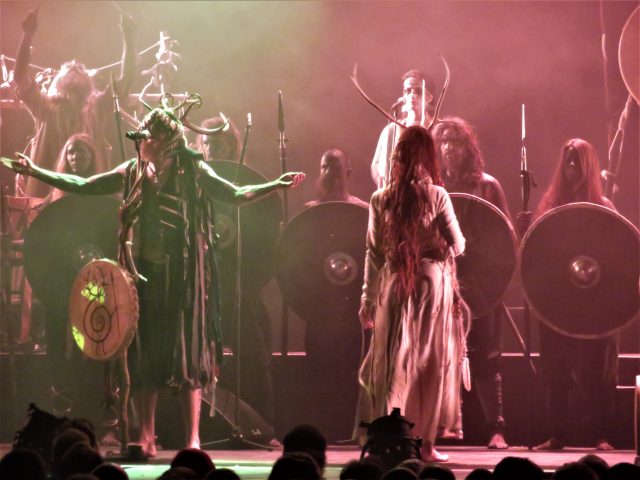
As much a performance piece as it is a concert, Heilung’s show has a very ritualistic character. From the appearance and the atmosphere of it, it could even be the real deal – not a performance, but an actual ritual. The movements of everybody on stage are slow and executed with earnestness, deliberation and precision. The music is mainly vocals and percussion with some electronics and synth work, mostly in the form of deep buzzing sounds; it is very repetitive and of a meditative nature. At some points during the show I really had the feeling that a ritual was underway, finding one scene that looked like the simulated beheading of a human sacrifice even a bit disturbing.
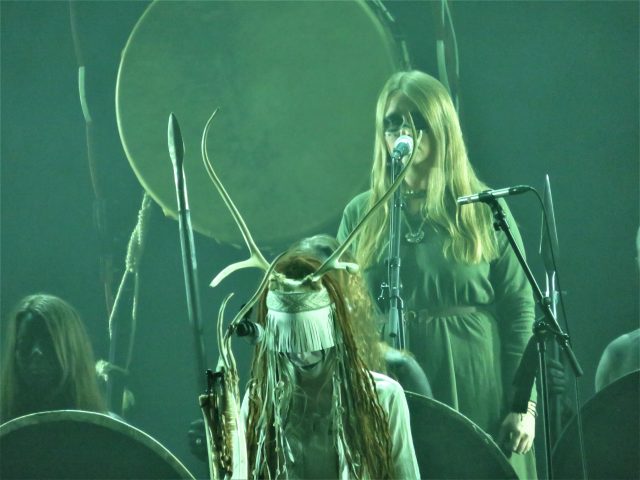
Singer Maria Franz appears to have the role of the chief priestess, singing in languages and ways that are difficult to pinpoint. Her vocals range from sprechgesang to full singing, with some high-pitched screams thrown in here and there. Though ferocious looking, she is a very calm, neutral, even a bit detached presence of stage. Kai Uwe Faust, her male counterpart, leaves a slightly threatening impression. His Tibetan-inspired throat singing, not really familiar to European ears, adds to the feeling of strangeness. Apart from what appear to be the two main characters, there is also a warrior “choir” with Viking shields and spears, effectively repeating parts of lyrics sung by the main performers.
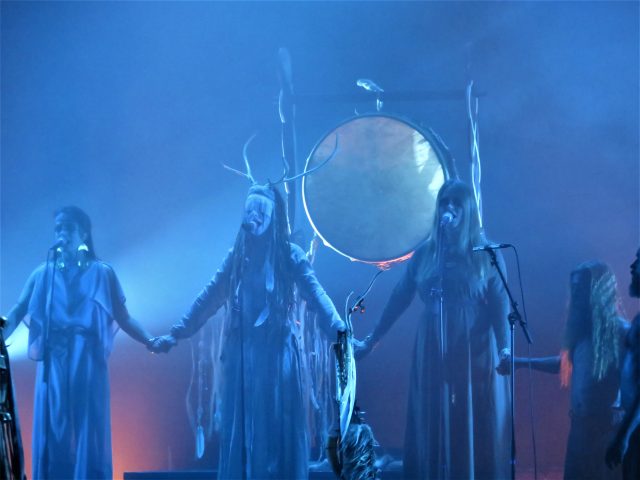
The overall atmosphere is best described as authentic. It is a bit terrifying, but at the same time uplifting. While I often have the feeling that bands labelled as pagan are just an act, I didn’t have that impression with Heilung. It is more than evident that a lot of thought went into the realization of this project. One of the things that I liked best about the show was the absence of obvious and familiar imagery. Heilung have made an effort to go beyond the familiar and the obvious, looking for common roots. And they have definitely succeeded. The audience was visibly in awe during and after the show. In front of the stage people were dancing in what looked pretty much like a ritualistic dance leading into trance.
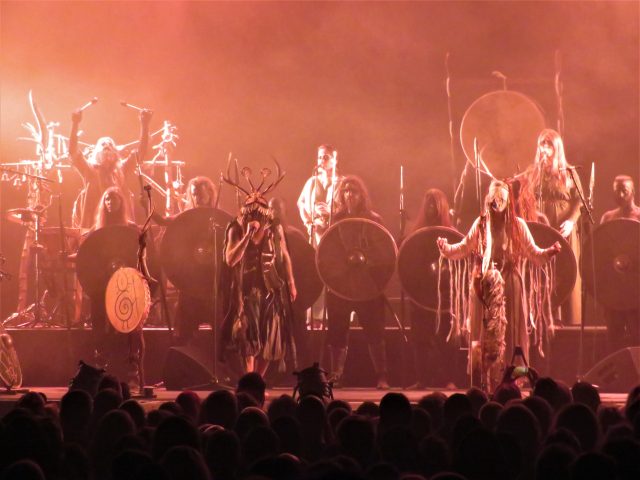
After the show, amazed by what I had witnessed, I went out of the venue and into the night, feeling oddly misplaced in the 21st century surroundings, some of the unintelligible lyrics still circling through my mind.
The next day, there was one other must-see performance, at least for me. Seven That Spells were performing their krautrock trilogy The Death and Resurrection of Krautrock at the Green Room in three sets. The Green Room is another venue in the 013 building, but smaller and more intimate. The venue was packed when I got there, so I went up to its balcony hoping that it would offer a better vantage point, but in vain: The place was so full of fog, the fog machine apparently working on overdrive, that you could hardly see anything.
The show began with one word constantly repeated through the speakers: Satan. A member of the audience in a custom-made Mayhem leather jacket must have felt right at home in the red lit room.
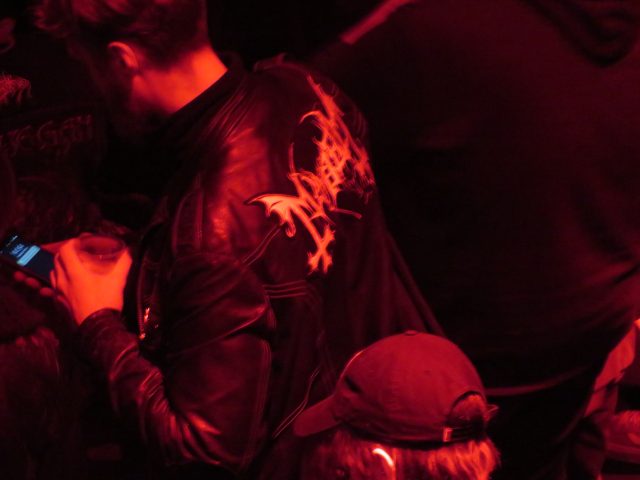
Aum [the origin of all things] introduced the audience to the band’s psychedelic, repetitive, meditative, yet cold and sober sound. The first set suffered a bit towards the end, people were probably leaving for other shows, or maybe not intrigued enough by the slower and more contemplative parts of the album. Everybody was back, however, for the second and the third set, Io and Omega, to hear krautrock with chanting in Old-Greek, tribal drumming, crazy guitar parts, and bass playing that sounds like a heartbeat.
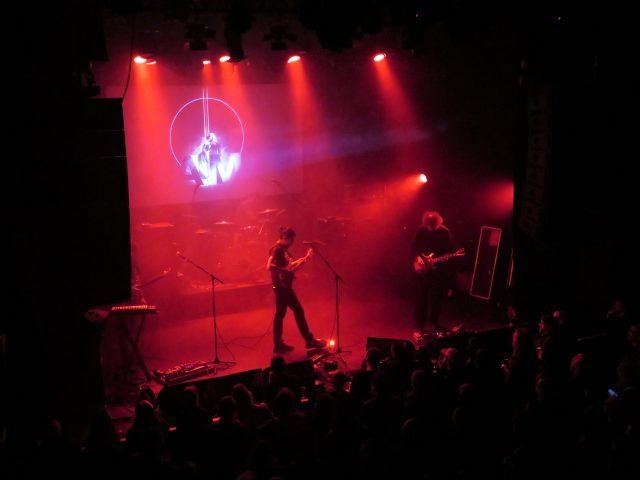
Especially during the Omega set and its tribal drumming parts I was reminded of Heilung’s pagan folk, and its ritualistic character. Future Lords was just as meditative and ritualistic as Heilung’s set, only in a different and more intellectualized way.
The Green Room is definitely my favourite venue at Roadburn. It has just the right size for my taste, not to small and not too big, and it has excellent acoustics.
The last show I want to mention here took place the same day, late at night at the Patronaat, a former church, after Mono had played a very convincing surprise show there. Messa [Italian for mass] were celebrating their occult mass at the Patronaat, burning incense at the beginning of their show the smell of which filled the whole venue. It proved a very fitting location for their jazzy doom. Contemplative and somewhat experimental, Messa’s music was the perfect conclusion for my stay at the festival.
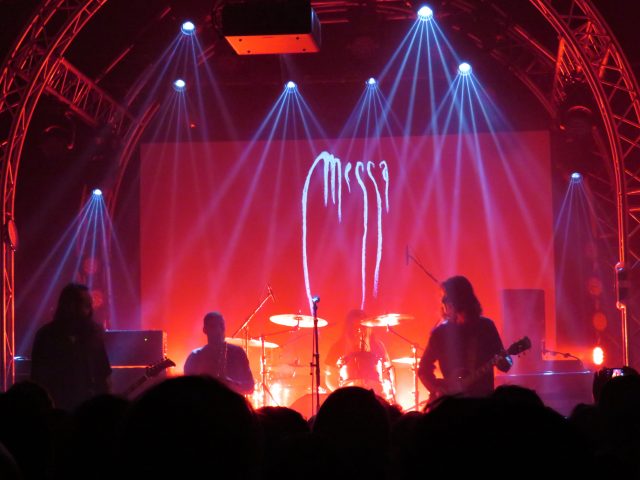
The following day I had to take my lift back. In the morning, I walked into town for a bagel and a cup of coffee. At a random café a husky came to say hello quickly followed by his apologetic owner. We started talking. He asked me where I’m from, I said Croatia, and after a while he told me that he was a former soldier who had served in the Dutch battalion at Srebrenica. Bloody hell, I thought. We continued talking for an hour and a half, and I went away from Tilburg with my mind blown in many ways.
Review and Photos Slavica

Leave a Reply